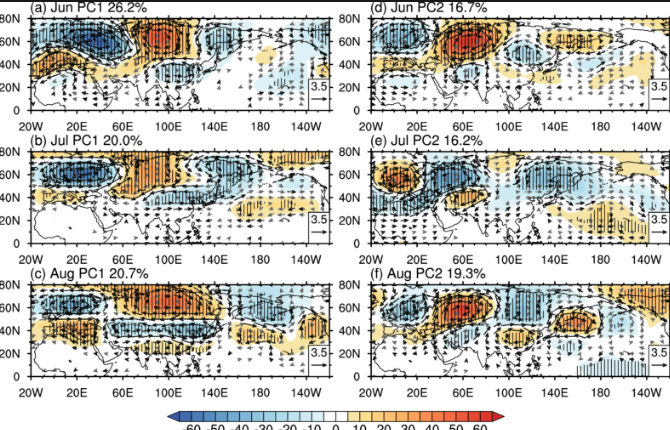A teleconnection pattern of upper-tropospheric circulation anomalies over the Eurasian continent associated with the interannual variability of atmospheric convection over the tropical western North Pacific in July

It has been well documented that the interannual variation of atmospheric convection over the tropical western North pacific (WNP) affects the East Asian climate in summer significantly, and can be influenced by the preceding winter ENSO. However, there is also a large portion of WNP convection variability that cannot be explained by the preceding ENSO. This study suggests that, particularly in July, the WNP convection anomalies are closely associated with a teleconnection pattern of upper-tropospheric circulation anomalies over the Eurasian continent, which is characterized by an anomalous cyclone over Europe, an anticyclone over Central Asia, and a zonally elongated cyclone over East Asia. This teleconnection pattern can also be detected by the first leading mode of upper-tropospheric circulation in July. The authors conclude, based on the present results and those of previous studies, that the teleconnection pattern induces WNP convection anomalies through Rossby wave breaking near the Asian jet exit region, and this impact is comparable to that of the preceding winter ENSO.